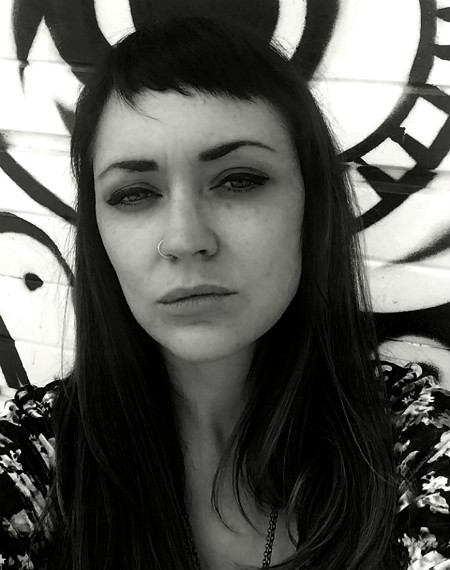
Animals Eat Each Other, the new novel by Elle Nash, is a powerful and precisely-written story of a young woman coming to terms with who she is and what matters most to her in life. The novel’s narrator–who is given the name Lilith over the course of the book–becomes involved with a volatile couple, Matt and Frances. It’s an experience that both gives her a greater sense of possibility in the world and forces her to reckon with her own identity and concepts of desire. I asked Nash some questions about the process of writing Animals Eat Each Other, the novel’s setting, and more.
Early on in the novel, the narrator mentions that she’s looking back on these events from several years later. What made introducing some distance into that perspective important for you as far as telling this story?
I wanted to be sure that she came off as more self-aware than simply experiencing the events as they happened, that the narrator had some distance and time to ruminate on the actions of herself and of those around her.
One of the sentences that really stood out to me was, “He regarded her with a tenderness normally reserved for injured animals or children.” Animals and humans are also compared in several chapter titles, giving the novel’s title some very ominous implications. How early in your process did you have this motif in mind?
That’s one of my favorite lines so I’m glad that one stood out to you. The novel started of this way pretty early. An early first draft of the book was called “Birds of Prey” in relation to how the Lilith myth is commonly associated with owls, and I was interested in exploring the predator/prey dynamic in relationship to humans. I think in the modern world it is easy to forget that humans are animals also and are subject to particular forces of nature. Although there are very destructive things we do (to the earth for example– and to each other) that are different from other animals, humans also hurt and hunt each other in various ways, from large scale war, imperialism, or through subjugation for example, all the way down to their interpersonal interactions. What makes humans unique in my opinion is their ability to use deception–whether it is to survive or to get something they want–in a way that is different from other animals. I wanted to explore that.
There are a number of shifting power dynamics within the novel, including the narrator’s interactions with Matt and Frances and the history that Matt and Frances have had before the book opens. To what extent did you have these in mind before you began the book, and to what extent did they emerge as you wrote and revised these characters?
The power dynamics were something I had thought of early on. I wanted there to be a lot of push and pull between each of the three characters– there are points when Matt seems like the most powerful but then also becomes weakened emotionally, for example. The part that began to emerge more as I was writing was the role of Jenny, Lilith’s best friend. She ended up becoming one of the most important characters in the book to me.
Tattoos play a significant part in the novel, both for what they signify and for how they accentuate the physicality of these characters. How did you figure out which ones worked for each character, and were there any difficulties conveying a visual artform in prose?
I had a pretty tough time writing about tattoos without feeling that it was coming off as cheesy. I haven’t seen many representations of tattoos in books I’ve read, and it can be hard to convey the physicality of what a tattoo looks like only with words. I just had to go with it, though. Meaning isn’t derived from objects themselves, but from the intention and thought we place into objects in our lives, so I tried to temper the visual restriction of describing the tattoo by writing about how it felt for the characters– getting a tattoo itself, the healing process, and how the characters think of the tattoos as symbols of their own lives, the meaning they put into them.
The novel delves into Matt’s Satanism, and a tarot card reading plays a significant part in the book. Given the novel’s setting of Colorado Springs, and that city’s association with conservative Christianity, to what extent is this intended as a commentary or critique of the space in question?
A lot of writing about Colorado or the Rocky Mountains tends to be very flowery, natural, and associates the state with a lot of beauty. Growing up, I heard outsiders comment on how beautiful Colorado Springs was all of the time. Living there, however, was a much different experience. Focus on the Family was a huge part of the curriculum in schools when I was a kid. There are over 400 churches and five military bases in the Springs alone, which lends to an interesting cultural experience to say the least. A lot of transient people, so when you’re stuck there as a teenager, it can feel a little like purgatory. (Side note: there is a street in Colorado Springs named Purgatory.) I wanted to convey this side of Colorado and Colorado Springs itself, the part that tourists don’t experience.
Over the course of the novel, the narrator is given the name “Lilith.” Is that how you thought of her as you wrote her?
Yes, I often refer to her as the narrator, or simply as Lilith. She allows herself to be named this way, so I associated that name with her as I was writing her.
Follow Vol. 1 Brooklyn on Twitter, Facebook, and sign up for our mailing list.
